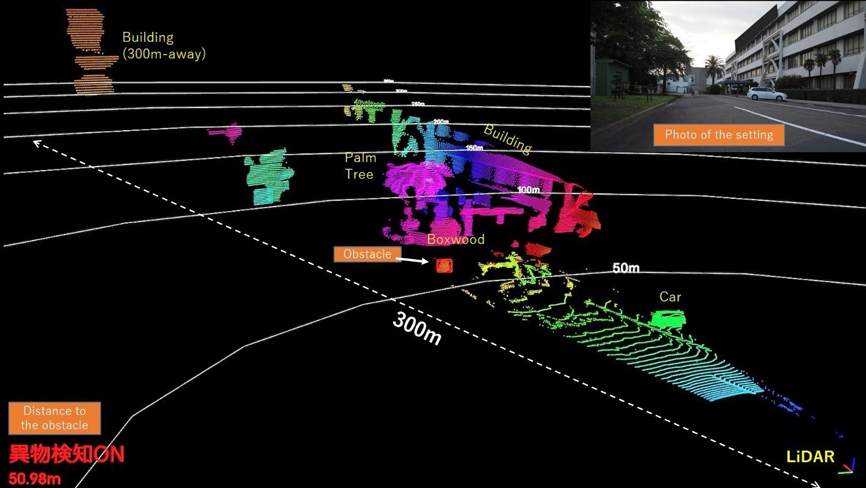Toshiba lidar monitors transport infrastructure
- June 21, 2021
- Steve Rogerson

Japanese firm Toshiba is expanding its solid-state lidar for transportation infrastructure monitoring.
The updated lidar is said to achieve the world’s smallest volume, robust vibration and wind resistance while maintaining a maximum detection range of 200m, plus the highest resolution of any sensor of similar size.
The upgraded performance should advance progress towards autonomous driving, and expand its application into monitoring transportation infrastructure, in such areas as early detection of road subsidence or landslides, snow cover, or falls of objects onto roads.
Current monitoring of transportation infrastructure relies on cameras, but their performance is degraded by low light and bad weather. The upgraded solid-state lidar is an alternative, as it realises clear, long-distance, robust 3D scanning and object detection in a wide variety of lighting and weather conditions. It is also compact, with an overall volume of 350cc. It is a third the size of an earlier prototype announced in July 2020.
“We look forward to deploying our technologies in roadside lidar,” said Akihide Sai, senior research scientist at Toshiba. “We have secured technologies essential for a compact, high-resolution, long-range solid-state lidar that is robust and simple to install. We anticipate demand for such a versatile technology in both the autonomous driving and transportation infrastructure monitoring markets.”
Toshiba achieved a compact lidar with higher image resolution through upgrades to its silicon photo-multiplier (SiPM), a light-receiving chip. An SiPM consists of light-receiving cells controlled by transistors. The chip has a smaller transistor module, and eliminates the buffer layer that protected the transistors with recently developed insulating trenches between the transistors and the light-receiving cells. The potential problem of low light-sensitivity from using smaller transistors was solved with the addition of a high-withstand voltage section to raise the voltage input to the light-receiving cell.
These innovations have reduced the size of the SiPM by 75% while enhancing its light sensitivity by 50% against the 2020 predecessor. More SiPMs can now be arrayed in the same package, boosting resolution to 1200 x 80 pixels, a four-times improvement.
Toshiba has also ensured that the lidar unit has the durability essential for outdoor use in all weather conditions. Temperature compensation technology that automatically adjusts voltage input to the light-receiving cells reduces impacts from external temperature changes and maintains SiPM performance.
In addition, by using its know-how in high-density component mounting, Toshiba has reduced the overall size of the lidar projector and receiver to 350cc, and secured robust vibration and wind resistance.
Toshiba and its 120,000 employees worldwide secured annual sales surpassing ¥3.1tn in 2020.





